












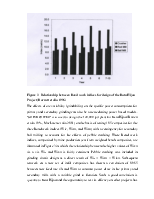
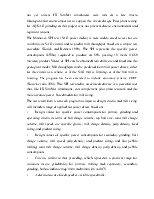
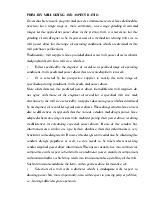
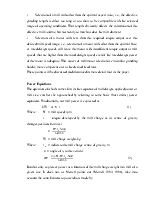
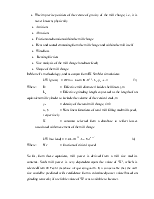
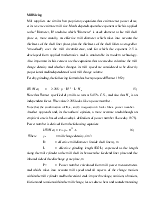
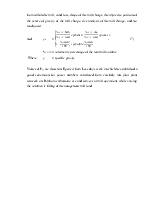
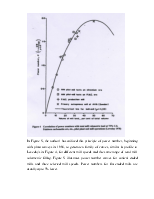

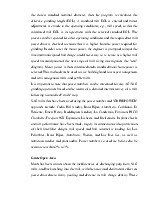
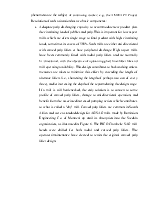

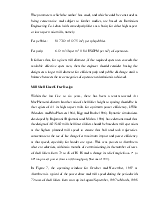
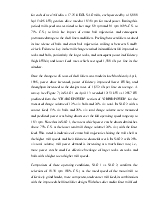
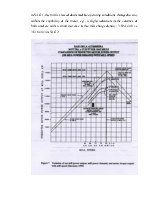
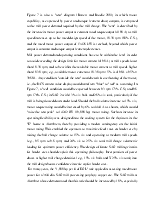
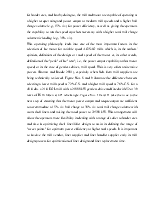
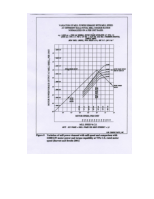
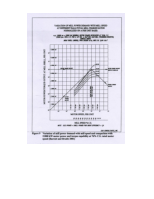
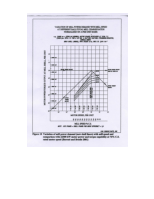
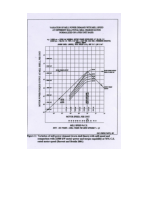
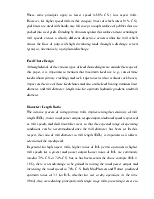
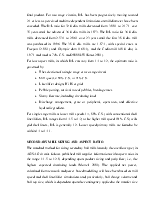
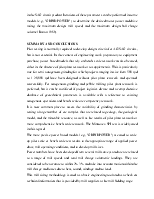
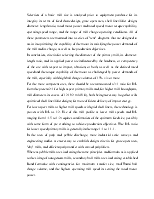
Selection and Sizing of Autogenous and Semi-Autogenous Mills
Derek Barrat1 and Mark Sherman2
ABSTRACT
The technology for sizing autogenous and semi-autogenous grinding mills has evolved over the last twenty years from the use of basic equations and the determination of specific power requirements to an understanding of the effects of feed preparation and size analyses, dynamics in the mill charge, the flow of pulp through the mill, the use of simulation programs, and grinding efficiency studies.
This paper reviews the traditional methods of selecting and sizing autogenous and semi-autogenous mills and comments on some of the recent developments that can influence the determination of the applied power, such as mill shell liner design and feed preparation.
INTRODUCTION
Since publication of the precedent chapters on autogenous and semi-autogenous grinding (Dor and Bassarear 1982, Turner 1982), some 200 primary mills (mostly semi-autogenous mills) larger than 8.535 m (22 ft) diameter, and including the world's largest 12.192 m (40 ft) diameter mill, have been installed world-wide (Jones 2001). Until 19%, the largest mill was 10.973 m (36 ft) in diameter with a 13425 kW (18,000 hp) gearless drive. The largest gearless drive to date is 19395 kW (26,000 hp) on the 40 ft dia. mill at Cadia Hill. The first gearless drives of this type were ordered by Codelco - Chuquicamata in 1986 for two 32 ft dia. mills, 8205 kW (11,000 hp each), followed by Codelco - El Teniente with an 11190kW (15,000 hp) drive on a 36 ft dia. mill ordered in 1987. This group of mills are grinding ores of copper, gold, nickel, lead, zinc, silver, platinum, palladium, molybdenum, iron, diamonds, aluminum, and limestone.
This expanded use of autogenous (AG) and semi-autogenous (SAG) technology begs the question as to whether it is "selected" in comparison to "old technology" (multi-stage crushing, rod mills/ball mills or single-stage ball milling).
![]() There have been recent (2000-2001)
examples of new projects or plant expansions for which AG/SAG grinding has not
been selected. Instead, the multi-stage crushing and single-stage ball milling
option has been favoured. While these projects are at the basic engineering
stage, the largest sizes of crushers, screens and ball mills and, in one case,
high pressure grinding rolls, HPGR (Parker et alia 2001) are being utilized.
Whereas current perceived "limitations" with respect to the
manufacture of SAG mill designs and sizes larger than 40
ft dia. and ball mills larger than 24
ft dia. or 26 ft dia. have in some cases governed this rejection, the capital
cost and operating cost of the multi-stage crushing, screening and ball milling
operation also enters into the equation. In certain circumstances, these
circuits can be cost competitive, and can be especially so if the AG/SAG option
is not very power-efficient, even after all the necessary optimization steps
have been taken. In one case (as yet unpublished), the capital cost of an
additional primary crusher, required to ensure the specified feed size
distribution (as determined by pilot plant testwork) to a pre-crushing and
screening circuit ahead of SAG milling, was sufficient for that SAG milling
expansion to be rejected in favour of the largest "old technology"
machines.
There have been recent (2000-2001)
examples of new projects or plant expansions for which AG/SAG grinding has not
been selected. Instead, the multi-stage crushing and single-stage ball milling
option has been favoured. While these projects are at the basic engineering
stage, the largest sizes of crushers, screens and ball mills and, in one case,
high pressure grinding rolls, HPGR (Parker et alia 2001) are being utilized.
Whereas current perceived "limitations" with respect to the
manufacture of SAG mill designs and sizes larger than 40
ft dia. and ball mills larger than 24
ft dia. or 26 ft dia. have in some cases governed this rejection, the capital
cost and operating cost of the multi-stage crushing, screening and ball milling
operation also enters into the equation. In certain circumstances, these
circuits can be cost competitive, and can be especially so if the AG/SAG option
is not very power-efficient, even after all the necessary optimization steps
have been taken. In one case (as yet unpublished), the capital cost of an
additional primary crusher, required to ensure the specified feed size
distribution (as determined by pilot plant testwork) to a pre-crushing and
screening circuit ahead of SAG milling, was sufficient for that SAG milling
expansion to be rejected in favour of the largest "old technology"
machines.
![]()
1 DJB Consultants, Inc., North Vancouver, B.C., Canada
2 Sherman and Associates, Pty Ltd., Canberra ACT, Australia
The various components of AG/SAG technology are now better understood and risk assessment, with respect to its use, can be minimized with confidence provided certain basic principles are adhered to, namely:
• Definition of the applied net power which will cover the range of operating conditions that will be encountered during the time required to recover the capital investment of the project at an acceptable rate of return on that investment (payback period), and to continue to generate an acceptable rate of return on mill throughput for the foreseeable life-of-mine, even if a planned plant expansion is necessary. Success will depend on the degree to which the economic cycle, or more probably, the gradual decreasing trend in real commodity prices coupled with escalating operating costs affects ongoing confirmation of the mineable resource and ore grades. However, from ah engineering aspect, the predicted range of specific power consumption (kWh/t) and power sharing between primary and secondary grinding constitutes the design basis for the project and both depend entirely on a thorough understanding and interpretation of:
- Project geology, geological model, different lithologies, mineralizations, and alteration types, mineable ore zones
- Geotechnical parameters: point load index (PLI), unconfined compressive strength (UCS), rock quality determination (RQD), and fracture frequency (FF) throughout the mineable resource
Уважаемый посетитель!
Чтобы распечатать файл, скачайте его (в формате Word).
Ссылка на скачивание - внизу страницы.